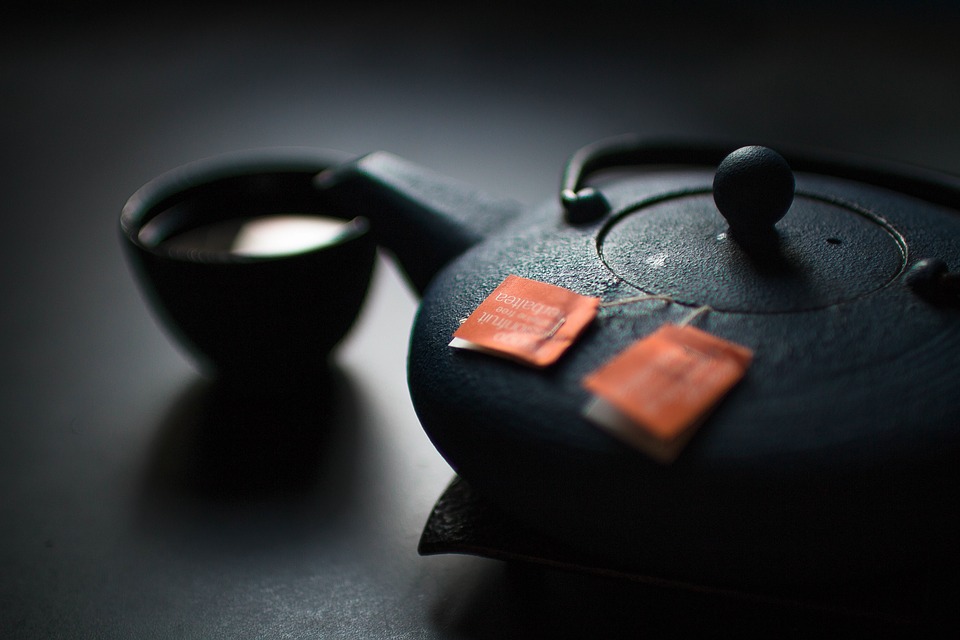We can see some differences between Western and Eastern traditions by comparing the Zen tea ceremony with the Western wine tasting ceremony. Both take a simple concept, having a drink, and ritualize it. Through ritual basic concepts central to each society become attached to the tradition. By looking at these rituals we can understand more about the societies in which they exist.
The Japanese tea ceremony, or Chado, is a Zen tradition. Tea came to Japan via China, but the Japanese tradition has become very distinct from the Chinese. The ceremony of Chado involves ritually drinking tea. Each action is gone about with a simple sort of clearheadedness and with care to detail. The enjoyment is derived from the uniqueness of everything and the appreciation of all of the actions involved in drinking the tea.
What this means in practice is that all instruments are appreciated.
The utensils used to make the tea are presented to the person drinking the tea. The cups are not overly elaborate or decorative. Each cup is enjoyed merely for its own existence. The cup is experienced by the senses directly and is not merely conceptualized. The feel of the cup-its smoothness, its weight-everything about it is appreciated. The tea itself is first prepared and then is whisked into a drink. The drink is then enjoyed through its smell, its feel in the mouth, its warmth, its weight. Throughout the whole thing, few words may be used. They are not important to the process. In the end, the dishes are washed and put back away. The ritual has come to an end.
A wine ceremony is a much different animal.
A bottle of wine is chosen based on its type. Tea may be higher or lower quality, but it is still just tea. Wine is white and red, and also Pinot Noir, Riesling, Chianti, or another varietal. We use our words to differentiate all of the types. Within this, the wine comes from a specific winery. It is also from a specific year, or vintage. We now have many levels of discrimination in place. The Japanese prefer to drink each cup of tea and realize its uniqueness through experience. Westerners prefer discrimination and conceptualizing to realize a thing’s unique nature.
 Wine also may be matched up and paired with food or hors de oeuvres. It is as if the wine is not enough by itself. We must add food on top. Through this pairing, we are supposed to somehow have a better sum experience. Tea in the tea ceremony is rarely paired with food. It may or may not be eaten with something, but it is never “paired.” Both the tea and the food are full in themselves and don’t need to be combined for a greater experience. This may come from the Western tendency to believe that more is better. After all, we invented the giant fast-food chains of the world that serve out “combos” that have massive quantities of food.
Wine also may be matched up and paired with food or hors de oeuvres. It is as if the wine is not enough by itself. We must add food on top. Through this pairing, we are supposed to somehow have a better sum experience. Tea in the tea ceremony is rarely paired with food. It may or may not be eaten with something, but it is never “paired.” Both the tea and the food are full in themselves and don’t need to be combined for a greater experience. This may come from the Western tendency to believe that more is better. After all, we invented the giant fast-food chains of the world that serve out “combos” that have massive quantities of food.
Another distinct difference we can look at is in the act of tasting. Wine is almost always compared to other things. Let’s look at a sample wine review:
“Bold cherry, toast and spice aromas lead to firm flavors of fruit, oak, and smoke. Great with pork dishes.”
Ignoring the fact that I have little idea what a “firm” flavor is, we can see that the writer compares the wine to a list of known things. The Westerner has taken this unique wine and reduced it to its supposedly universal qualities. Chocolate to me, though, may not taste the same as chocolate to you. My taste is unique to me. I also taste wine distinctly. My taste if the wine may be made up of different components than somebody else’s. This wine, to me, maybe, “Slightly nutty and reminiscent of warm nights in the asylum. The flavors are soft like cushions and filled with odors of vanilla.”
We can see that the descriptions are of little use in determining what the wine will taste like to me. Besides, a wine tastes good insofar as it tastes good. A description is not what tasting wine should be about. Perhaps the wine description is a way of describing the richness of unique experience through words, saying this is what the wine is to me. If this is the case, then we still fail because it applies other tastes to the wine that are not truly universal things either. Tea is enjoyed as unique in Zen because each cup of tea is fundamentally unique. There needs to be no description to reinforce this. It is a fact of the world.
A final thing we can look at is price.
Wine can go up to thousands of dollars a bottle for a particular vintage. Wine tasting is generally a rather elitist preoccupation. This divides people. The rich attach notions of sophistication to their ceremony.
People who participate often feel themselves to be better and different from the common people. The tea ceremony does not divide but unite. Tea is accessible to almost everyone in the world and one does not need to have a cup of 1962 Okinawa Long Leaf to enjoy it.
As such, the tea ceremony is a more noble ceremony than wine tasting in this author’s opinion. It need not be the case. I enjoy both wine and tea vastly. The West can keep the tradition of drinking wine and need not keep it exactly as it is. Perhaps we can take the ceremony of Chado as a model of what our wine tastings could be more like. The wine would taste just as good.






